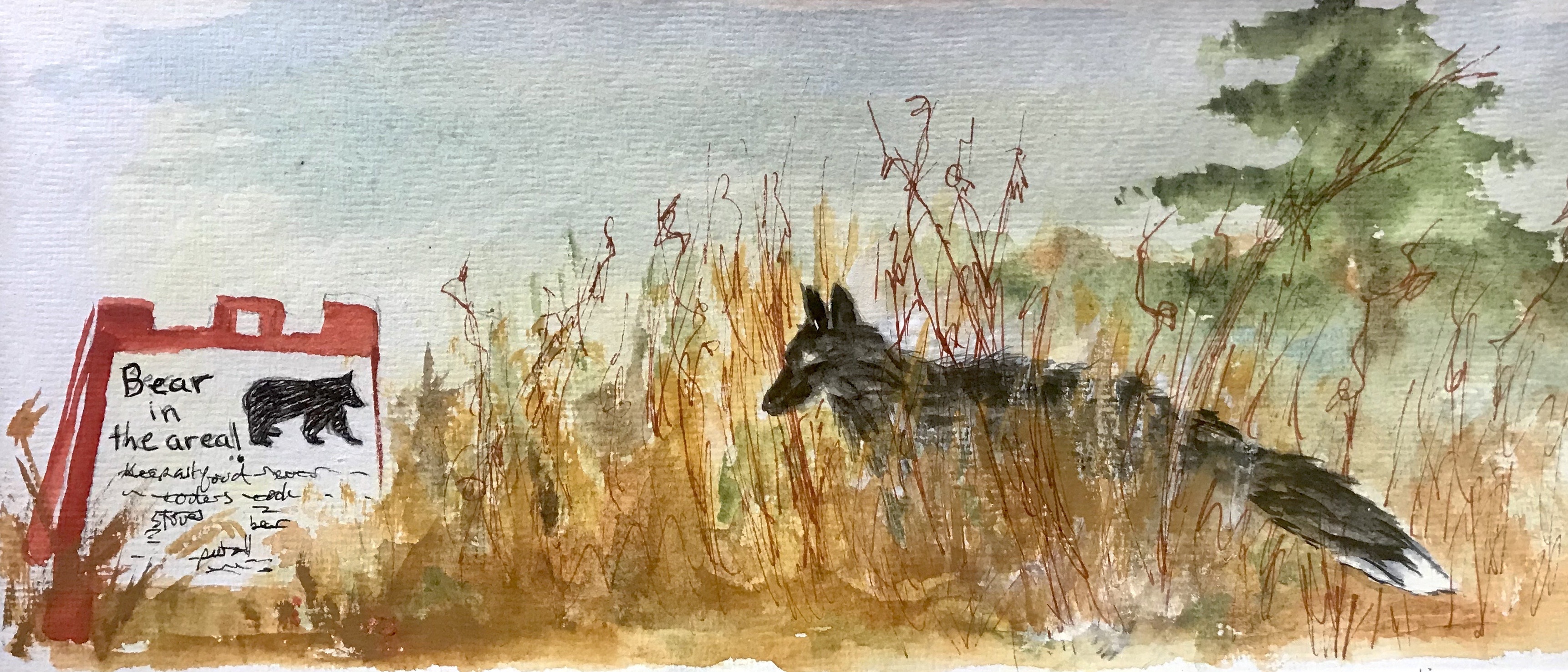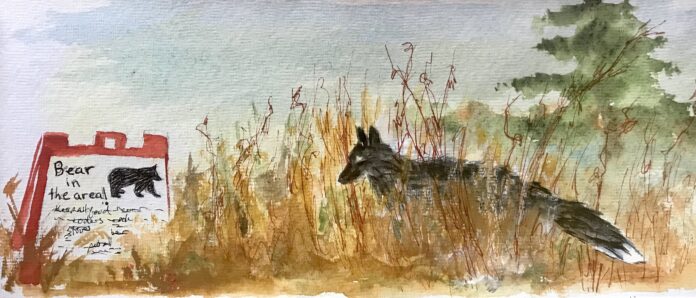BY LESLIE REGO

The Japanese printmaker Katsushika Hokusai (c. 1760–1849) noted, “There is a black which is old and a black which is fresh. Lustrous black and dull black, black in sunlight and black in shadow.”
What I am seeing stealthily move through the meadow is a lustrous black, gleaming in the sunlight. I cannot say for sure if the animal is old or young, but I can attest to the richness of its ebony black coat of fur. I watch the quiet approach. What animal is this?
At the start of the hike there is a sign that reads, “Bear in the area!” Oh no, I think. The bear is right here, not 10 feet away from me. But then I cast a second glance. Yes, the fur is black. Yes, the animal is partially hidden in the tall grass, but as pointed ears appear, I realize it is definitely not a bear.
A long dark tail with a white tip materializes and it hits me. This is a black fox!
The black fox is commonly known as a silver fox. It is a melanistic form of the red fox. An abundance of dark-colored pigment is developed in the skin, which transforms the fur anywhere from silver to a deep black, essentially the opposite of albinism. The fur can have great variation. It can be bluish-grey, or an ash color, but what I am seeing is a coat of fur that is completely black, except for the last three inches of the tail. The tip of the tail is startlingly white.
Black, during the time of the Old Masters, was made by pulverizing and burning animal bones in a sealed chamber, without oxygen, at temperatures as high as 1,292 degrees. The resulting mixture, referred to as bone char or ivory black, had excellent tinting strength. Today, the terms are interchangeable, but during the times of Rembrandt and Velasquez, ivory black was made by grinding charred ivory with oil, and bone char was made by using the bones of cow or pig. Today, making ivory black is not possible because any use of ivory poached from animals is illegal.
I take a very limited palette when I am hiking. At most, I have a handful of colors and black is not one of them. I meld ultramarine blue with umber to make a sumptuous blend. Life is easier. I am not pulverizing bones, nor am I burning them at high temperatures. As a result, I am quickly able to capture this crazy ironic moment of the black bear/black fox on the page of my sketchbook.
Leslie Rego is an Idaho Press Club award-winning columnist, artist and Blaine County resident. To view more of Rego’s art, visit www.leslierego.com.



